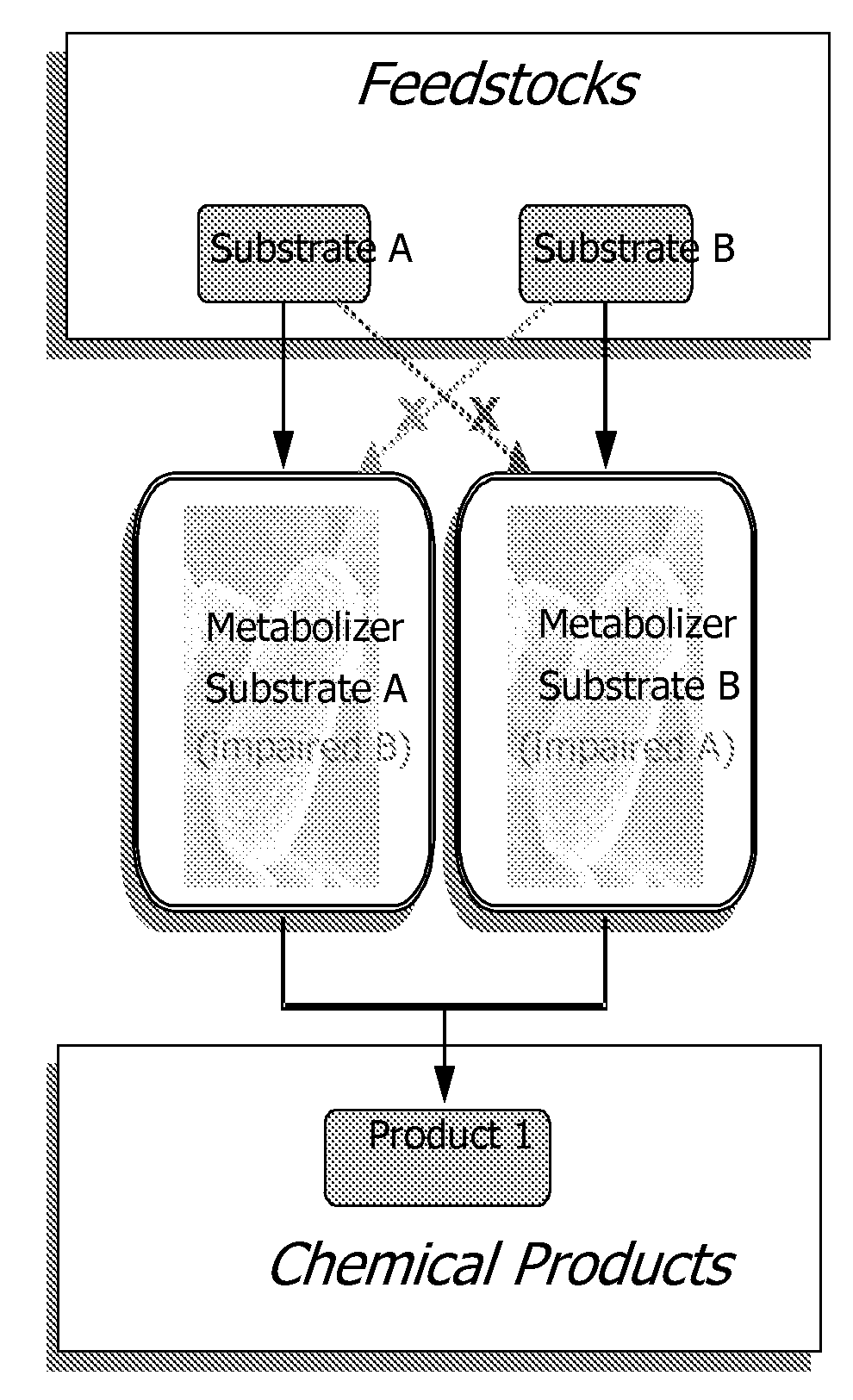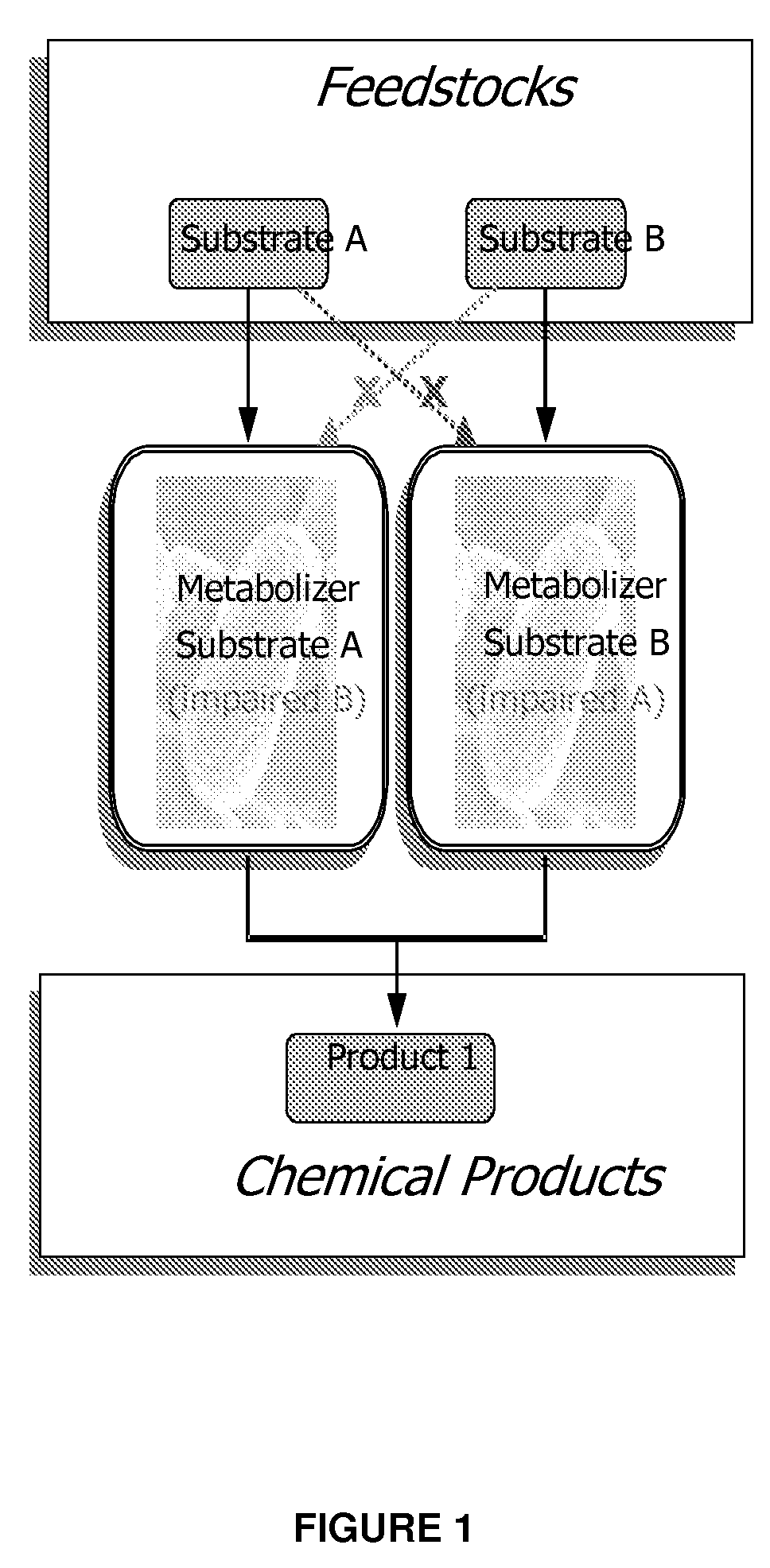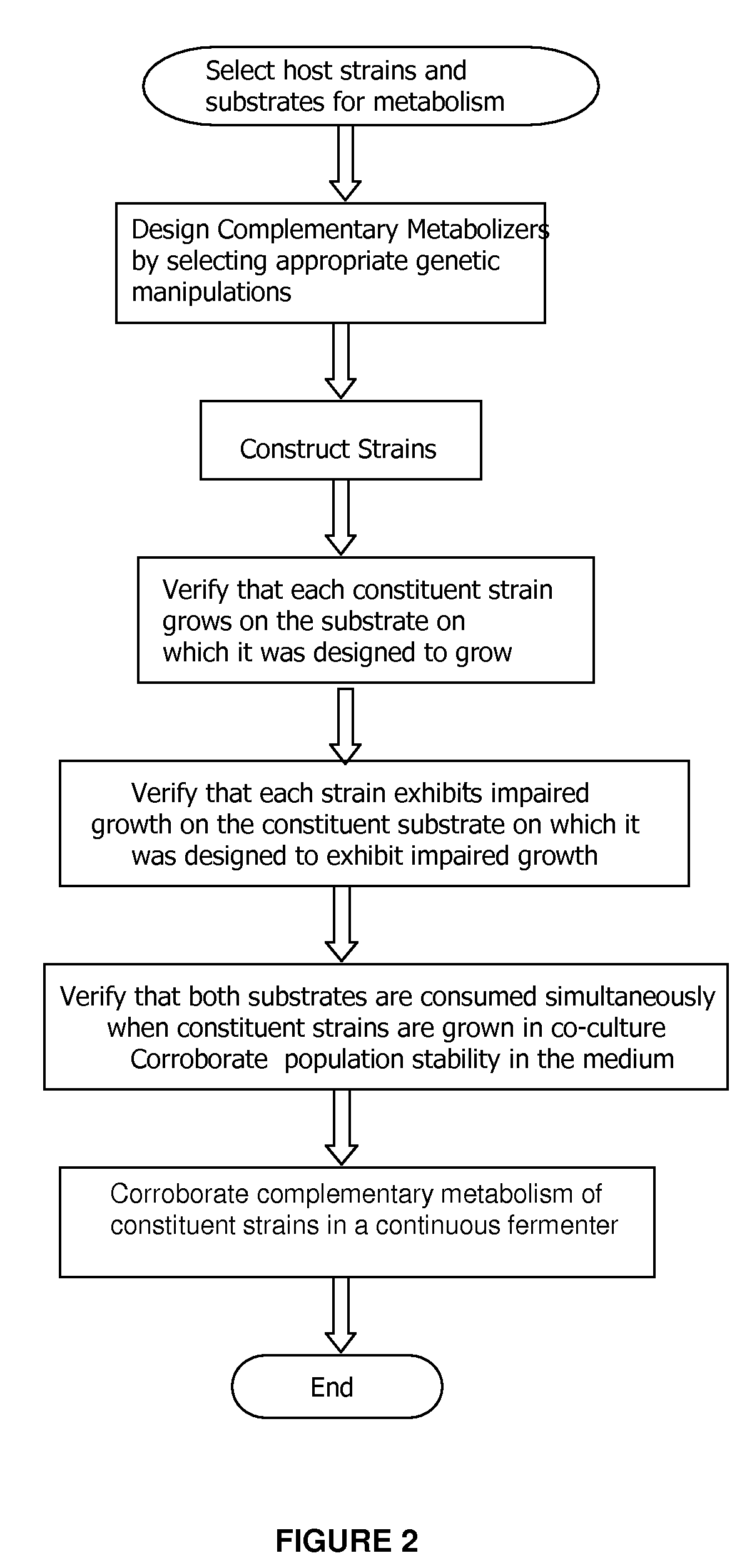Complementary metabolizing organisms and methods of making same
a metabolizing organism and a technology of a metabolizing organism, applied in the field of organism creation and engineering, can solve the problems of affecting the overall process economics, affecting the effective utilization of such mixed sugar feedstocks, and reducing the rate and yield of the overall process, so as to improve the metabolic rate of the first, improve the metabolic rate, and improve the metabolic rate
- Summary
- Abstract
- Description
- Claims
- Application Information
AI Technical Summary
Benefits of technology
Problems solved by technology
Method used
Image
Examples
example i
Complementary Metabolizing Organisms for Glucose and Xylose
[0113]This Example describes the design and construction of a complementary metabolizing (CM) set of bacterial strains that simultaneously metabolize a mixture of glucose and xylose in co-culture as compared to an unmodified or wild type strain.
[0114]Glucose and xylose were selected as a pair of substrates for demonstrating complementary metabolizing sets because they are both predominant sugars in cellulosic biomass, a desired low cost feedstock for bioprocesses. E. coli also was selected as the host organism to confer preferential substrate utilization in each of two engineered strains because it can naturally metabolize both glucose and xylose, albeit sequentially. Additionally, the genetic manipulation and culturing of this organism is very well characterized.
[0115]The set of CMO strain designs for utilization of a mixed carbon source of glucose and xylose consisted of one constituent strain engineered to metabolize gluc...
PUM
 Login to View More
Login to View More Abstract
Description
Claims
Application Information
 Login to View More
Login to View More - R&D
- Intellectual Property
- Life Sciences
- Materials
- Tech Scout
- Unparalleled Data Quality
- Higher Quality Content
- 60% Fewer Hallucinations
Browse by: Latest US Patents, China's latest patents, Technical Efficacy Thesaurus, Application Domain, Technology Topic, Popular Technical Reports.
© 2025 PatSnap. All rights reserved.Legal|Privacy policy|Modern Slavery Act Transparency Statement|Sitemap|About US| Contact US: help@patsnap.com



